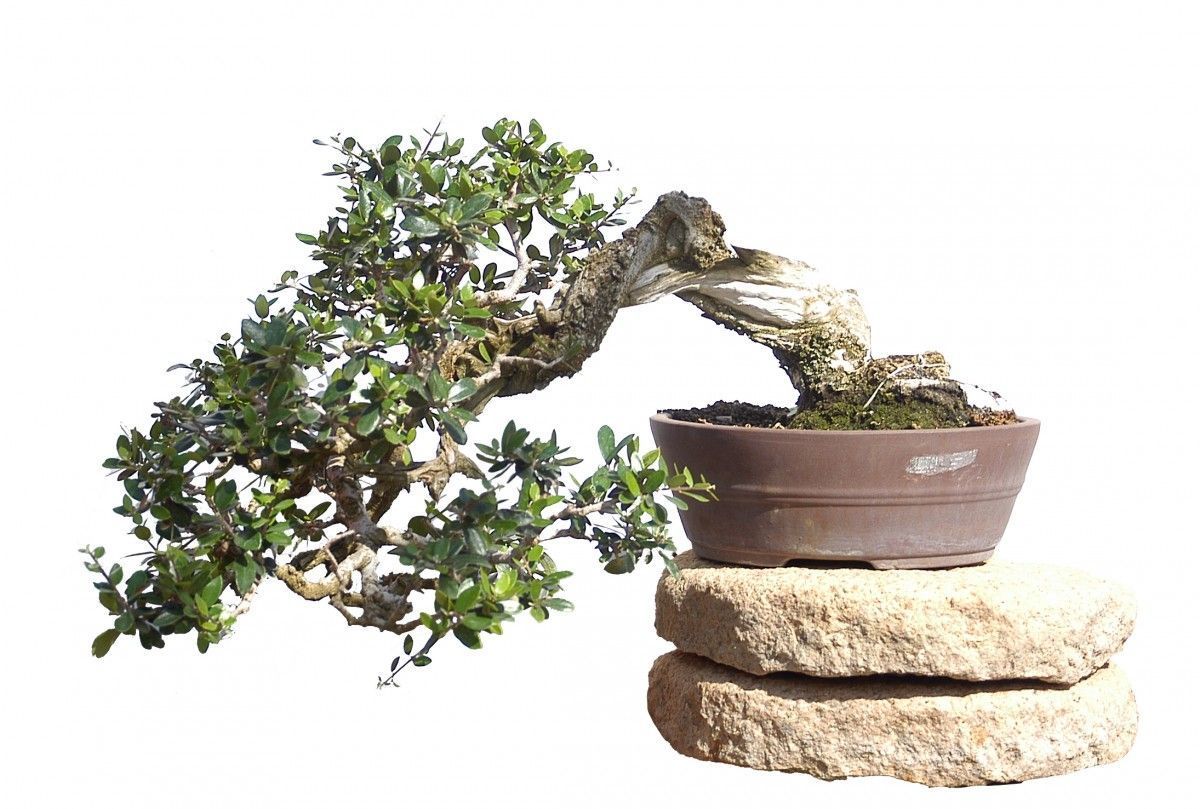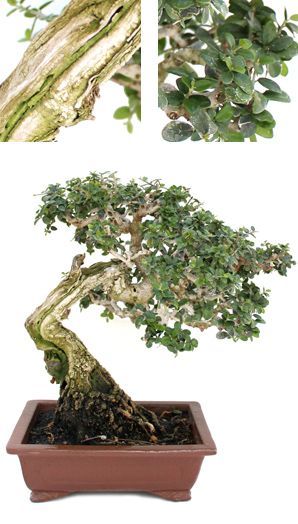Olive trees are the first trees to be worked by bonsai enthusiasts

Almost two out of three people who are now in the world of bonsai, and who have become gifted masters, have started by growing olive trees. Therefore, this is why we say that olive trees are the first trees to be worked by bonsai enthusiasts.
Olive trees are one of the easiest trees to root, they are resistant and very strong. In the beginning, making mistakes is almost inevitable. But olive trees have so much desire to live that they are able to overcome the errors that would kill trees of other species. For instance, when we make a mistake while cultivating conifers, they seems to be well and suddenly they dry up. And then it’s too late! But olive trees sprout again, and even if they lose some branches, they give us time to learn what we have done wrong.
Olive trees are not just for “bonsai beginners”. With their unpredictable shapes, dry wood, and bright small leaves, they can grow for many years in a bonsai pot and become the best bonsai in the world. Even if they are not perfectly cared for, olive trees adapt to almost everything, and are able to withstand even too frequent or too little watering, as long as we maintain a routine and we don’t implement drastic changes.
Dry wood in olive trees is spectacular. Well worked and clean, it lasts for many years, even without adding preservatives. This dry wood is fantastic, since in nature, in difficult conditions, olive trees grow very slowly, which causes their wood to be very dark and hard. Even when we grow them in pots or in the ground, their wood still has a special character. The shapes of the olive trees are not as twisted as those of the junipers. But instead its impression of robustness and durability is almost incomparable.

Formerly, in the beginning of their cultivation as bonsai, it was said that olive trees were “very slow”. But this was a consequence of not cultivating them well. With the proper techniques, pruning, watering and pinching in green, olive trees are formed with unprecedented speed. Unbelievable for those who do not know how to understand them.
We have published a large number of articles, books and even magazines about olive trees, in which we detail these techniques in depth. Although, in reality, we think we know how to work them, the most important thing is knowing how to listen to our trees. Olive trees tell us with the brightness and colour of their leaves if they are happy. With the force of their budding, they tell us if the roots are in good condition. Sometimes some small insects will feed from the tips of their buds. But they can be so easily seen that it is almost impossible for them to go unnoticed. On the other hand, sometimes a mealybug hide among the branches, and it is so well camouflaged that we only discover it by the white spots it leaves behind. For thousands of years, olive trees have lived with these pests, and have learned to survive them.
When we see the ancient olive trees in our fields, we are amazed at their shapes and their strength. And we cannot help but imagine all the peasants who have cultivated them. How would these people be dressed? What would their language be?
Little by little, they have all been disappearing, but the old olive trees keep among their branches the memory and the ways of the people who thought they were their owners. Perhaps it is a way of generously sharing his near-immortality.
Now I want to explain a particular thing to you.
For many years, more than 30, I have worked at Mistral Bonsai, and every day I see countless beautiful trees. I make it a rule not to buy trees at my job. But every time I see an interesting tree, which I am about to buy, it is always an olive tree.
I can’t help it.
About the Author
Josep Maria Miquel
Josep Maria Miquel has entered the world of bonsai in 1984. He worked with Mr. Takeo Kawabe on the "Shinpaku" project. He has notably also worked with Thierry Font on the "Mates" and "Sabinas" projects, being references in the world of bonsai. Director of the Bonsái Pasión and the France Bonsaï magazines, he has mostly dedicated his career to designing production at Mistral Bonsai. In 2011 he has been awarded the "Prix Européen d'art bonsaï" in Monaco, being considered the best professional in Europe.
Categories
Bonsai cultivation and care (54)
Bonsai gift (2)
Bonsai pests and diseases (6)
Bonsai repotting (3)
bonsai substrates (2)
bonsai tools (1)
Bonsai work (10)
Ceramic pots (3)
Chinese culture (1)
Chinese culture (2)
Corporative Mistral Bonsai (8)
Cuidados del bonsái (22)
Cultivo del bonsái (20)
Dead wood (2)
